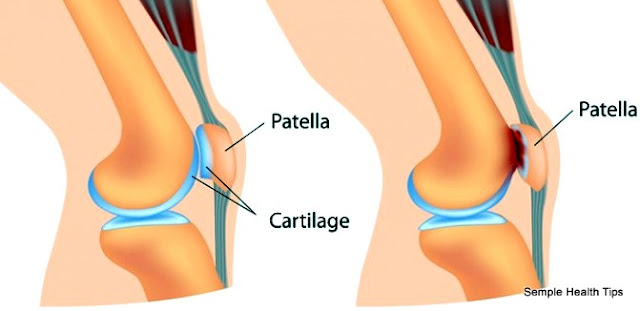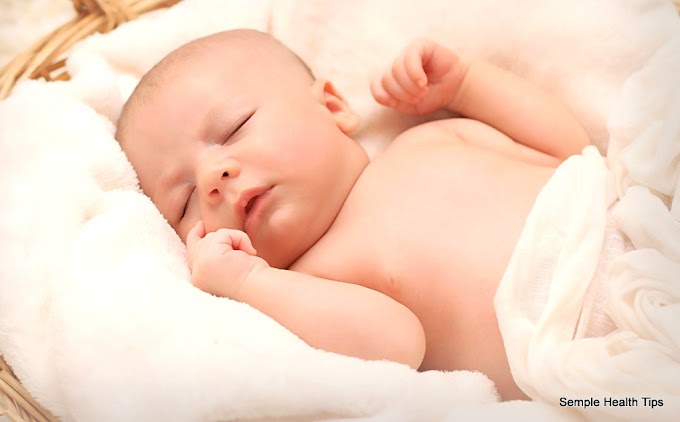What is chondromalacia patellae?
Chondromalacia patellae, also known as "runner's knee,"
is where the ligament on the undersurface of the patella (kneecap) deteriorates
and softens. This condition is normal among youthful, athletic individuals, yet
may also happen in more seasoned adults who have arthritis of the knee.
Chondromalacia is frequently seen as overuse damage in
sports, and sometimes taking a couple of days off from preparing can deliver
great results. In different cases, inappropriate knee arrangement is the cause
and simply resting doesn't give alleviation. The symptoms of runner's knee will
be knee pain and pounding sensations, however numerous individuals who have it
never seek restorative treatment.
Who is at risk for chondromalacia patellae?
There is an assortment of factors that may increase your
risk for creating chondromalacia patellae.
Age
Adolescents and youthful adults are at high risk for this
condition. Amid development spurts, the muscles and bones grow quickly, which
may add to short-term muscle imbalances.
Sex
Females are almost certain than males to build up runner's
knee, as they regularly possess less muscle mass than males. This can cause
strange knee positioning, as well as increasingly horizontal (side) pressure on
the kneecap.
Level feet
Having level feet may put more stress on the knee joints
than having higher arches would.
Previous damage
Earlier damage to the kneecap, such as a dislocation, can
increase your risk of building up runner's knee.
High action level
In the event that you have a high action level or
participate in continuous exercises that place pressure on your knee joints, this
can increase the risk for knee problems.
Arthritis
Runner's knee can also be a symptom of arthritis, a
condition causing irritation to the joint and tissue. Aggravation can keep the
kneecap from working appropriately.
What causes chondromalacia patella?
Chondromalacia patella frequently occurs when the
undersurface of the kneecap comes in contact with the thigh bone causing
swelling and pain. Unusual knee top positioning, tightness or weakness of the
muscles associated with the knee, an excessive amount of action including the
knee, and level feet may increase the probability of chondromalacia patella.
What are the symptoms of chondromalacia patella?
Dull, throbbing pain that is felt:
- Behind the kneecap
- Underneath the kneecap
- On the sides of the kneecap
A sentiment of crushing when the knee is flexed may happen. This can occur:
- Doing knee bends
- Going down stairs
- Running down slope
- Standing up in the wake of sitting for some time
Diagnosis
Your specialist will need to know whether you have ever:
- Broken your kneecap or some other bone in the knee joint
- Sprained your knee or harmed your knee's meniscus (the disk-shaped, shock-absorbing ligament inside the knee)
- Had knee surgery
- Had draining or contamination inside your knee joint
- Been diagnosed with arthritis in your knee
- Your specialist also will ask about the kind of work you do and your recreational and sports activities.
Counteractive action
You may most likely lessen your risk of chondromalacia by
forestalling knee injuries and overuse of your knee joints. To do this:
- Warm up and stretch before you take an interest in athletic activities.
- Do workouts to make stronger the leg muscular tissues round your knee, especially the muscle groups in your thigh called the quadriceps.
- Increase the intensity of your preparation program step by step. Never push yourself excessively hard, excessively fast.
- Wear agreeable, supportive shoes that fit your feet and your sport. Problems with foot arrangement can increase your risk of knee injuries. Ask your specialist about shoe inserts that can address arrangement problems.
- On the off chance that you ski or on the off chance that you play football or soccer, ask your specialist or coach about specific gear that can lessen your risk of knee injuries.
- On the off chance that you regularly kneel on hard surfaces when you work, wear defensive knee pads.
Treatment
Your specialist most likely will prescribe nonsurgical
treatments first. These include:
- Applying ice after exercise and as required for pain or swelling
- Taking a nonsteroidal mitigating drug, such as ibuprofen (Advil, Motrin and others), to assuage your knee pain and ease any swelling
- Taking other pain relievers, such as acetaminophen (Tylenol), which may also alleviate pain
- Starting a workout program to improve the muscular tissues round your knee
- Maintaining a strategic distance from high-sway exercises
- Maintaining a strategic distance from all kneeling and squatting
- Using knee tape, a support or a special patellar-following sleeve to keep your kneecap adjusted appropriately
Physical therapist can be especially useful to safely manage
patients through these treatments.
Tips to counteract chondromalacia patellae
You can help lessen your risk of building up runner's knee
by following these recommendations:
- Maintain a strategic distance from rehashed stress on your kneecaps. Wear kneepads in the event that you need to spend time on your knees.
- Make muscle balance by strengthening your quadriceps, hamstrings, abductors, and adductors.
- Wear shoe inserts that right level feet by increasing your curve. This will decrease the measure of pressure set on your knees and may realign the kneecap.
At long last, excess body weight may stress your knees. Keeping
up a solid body weight can help take pressure off the knees and different
joints. You can find a way to lose weight by decreasing your sugar and fat
admission, eating a lot of vegetables, fruits, and entire grains, and
exercising for no less than 30 minutes every day, five times per week.





0 Comments